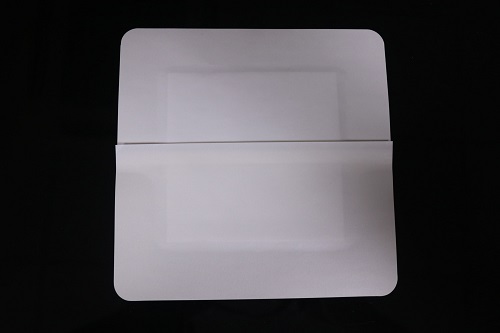Waterproof Wound Dressing has become a disruptive solution in modern wound care, combining protection, hygiene and comfort. Whether you are dealing with surgical incisions, minor cuts or chronic wounds, waterproof dressings provide the necessary benefits to support the wound healing process while helping patients maintain an active lifestyle.
What is Waterproof Wound Dressing?
A Waterproof Wound Dressing is a medical bandage designed to protect wounds from external moisture, bacteria and contaminants while keeping the skin breathable. These dressings typically have a moisture-resistant outer layer (usually made of a polyurethane film or similar material) combined with an absorbent lining that absorbs exudate (wound fluid).
Key Advantages
- Waterproof and stain resistant: The main advantage of waterproof dressings is their ability to form a waterproof barrier, which is essential for preventing infection. This makes them ideal for wearing in the shower or in environments where wounds may be exposed to moisture.
- Promotes faster healing: By maintaining a moist and controlled environment and protecting the wound from harmful substances, waterproof dressings help to promote faster tissue regeneration and reduce the risk of complications.
- Comfortable and flexible: Most waterproof dressings are designed to be thin, flexible and breathable, making them comfortable to wear even over joints or other moving parts of the body. They fit well against the skin and do not restrict movement.
- Fewer dressing changes: Because they stay firmly in place for long periods of time - even when exposed to water - patients often need fewer dressing changes. This reduces interference with the healing wound and reduces the risk of contamination.
Types of waterproof dressings
- Transparent film dressings: thin, lightweight, transparent dressings that can be applied directly to the skin. Ideal for minor wounds or covering intravenous sites.
- Foam dressings with waterproof backing: thicker dressings that provide cushioning and absorption for moderately to heavily exuding wounds.
- Hydrocolloid Dressing: Provides a waterproof seal while forming a gel-like substance over the wound to support moist healing.
- Composite dressings: multi-layer dressings consisting of an absorbent core and a waterproof outer layer.
When to use waterproof dressings
Waterproof dressings are indicated for:
- Post-operative care
- Minor cuts, abrasions and lacerations
- Burns
- Chronic wounds, e.g. ulcers
- Wounds in contact with water (e.g. hands, feet)
Waterproof dressings may not be suitable for wounds with a lot of exudate, infected wounds or areas with fragile skin. Always consult your healthcare provider for proper wound assessment and dressing selection.
Tips for use
- Thoroughly clean and dry the skin around the wound before applying the dressing.
- Avoid pulling the dressing too tightly, which may cause discomfort or impaired circulation.
- Monitor the wound regularly for signs of infection or maceration.
- Change the dressing according to the manufacturer's instructions or as recommended by your healthcare provider.
Waterproof Wound Dressings provide an effective and convenient way to protect wounds while still allowing you to continue your daily activities, such as bathing or light exercise. Their ability to protect wounds from water and pathogens while creating an environment conducive to wound healing makes them a reliable choice for both acute and chronic wound care. As with any medical product, proper application of dressings and guidance from a healthcare professional is key to optimal healing results.

